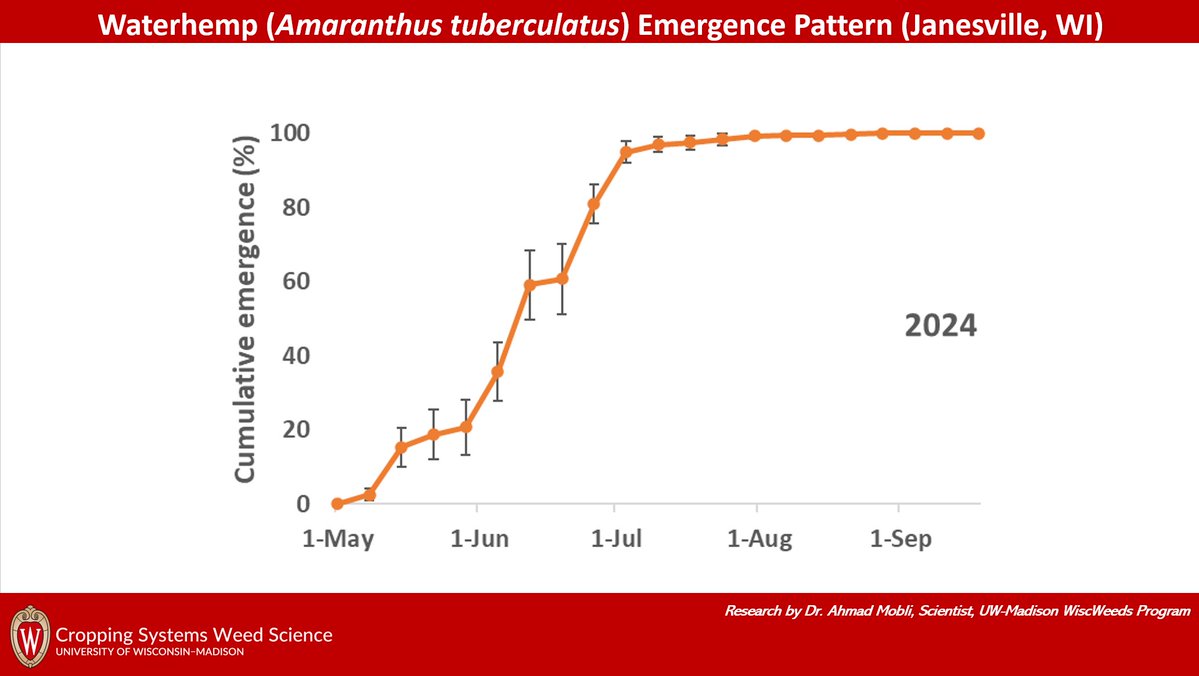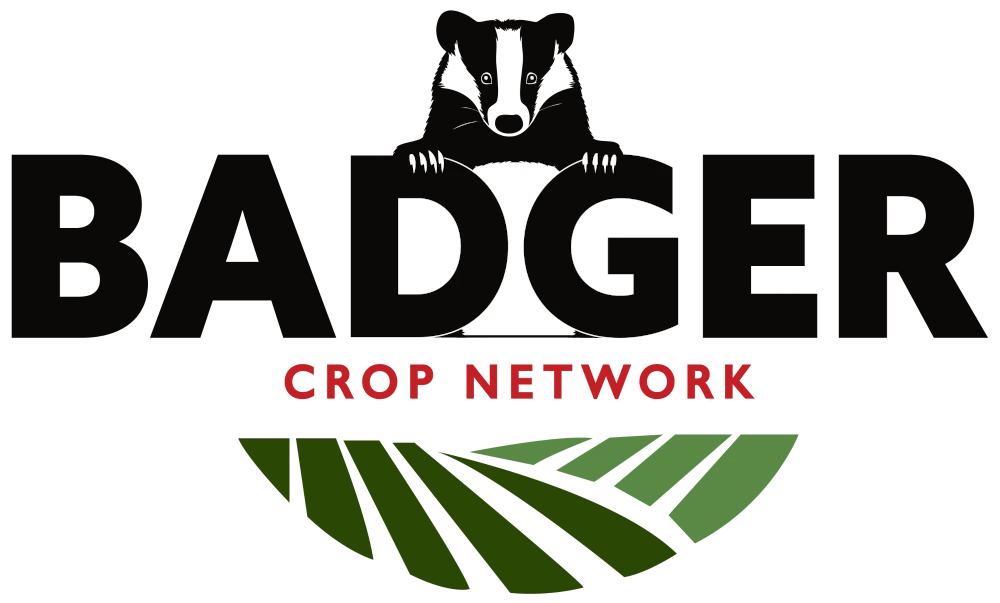Use of effective pre-emergence (PRE) herbicides remains the cornerstone of waterhemp management in Wisconsin’s corn-soybean production systems. Illinois research by Landau et al. (2021) demonstrated that 2 to 4 inches of rainfall within 15 days after PRE application significantly increases the likelihood of successful weed control. Additionally, using herbicide combinations not only requires less rainfall to maximize the probability of effective control but also improves weed control outcomes compared to single active ingredients. Wisconsin research by Severo Silva et al. (2023) supports and corroborates the findings of Landau et al. (2021).
Based on my experience in southern Wisconsin, PRE applications made in late April to early May generally receive sufficient precipitation for activation (coincidentally, we’re getting a good soaking rain as I write this article). However, PRE applications after mid-May often face less reliable rainfall, which can limit their effectiveness. Data from Dr. Ahmad Mobli’s research shows that waterhemp typically starts emerging in Wisconsin in early to mid-May. Therefore, ensuring that PRE herbicides are available in the soil solution during this critical period can greatly improve control success.

2024 waterhemp emergence pattern in a bareground experiment led by Dr. Ahmad Mobli at the Rock County Farm, Janesville, WI.
That said, herbicide dissipation is an important consideration, especially with early applications. Recent research led by #WiscWeeds graduate research assistant Guilherme Chudzik, funded by the Wisconsin Soybean Marketing Board, found that residual herbicides dissipate faster in lighter soils (e.g., sandy loam with 1.6% organic matter) than in heavier soils (e.g., silt loam with 3.5% organic matter). Additionally, dissipation was more rapid during the wetter spring of 2022 compared to the drier spring of 2023. These findings suggest that early-applied PRE herbicides, particularly in light-textured soils during wet years, may struggle to control late-emerging flushes of waterhemp and small-seeded grasses (e.g., foxtail species). In contrast, more consistent residual control was observed in silt loam soils.
Key Takeaways for Wisconsin Farmers:
- Application timing, soil type, weather conditions, and weed pressure all influence the effectiveness of PRE herbicides.
- Strategic timing of PRE applications is crucial for maximizing control, especially when targeting waterhemp control.
- In lighter soils, residual herbicides dissipate faster. Avoid ultra-early applications in these fields, whereas this is less of a concern in heavier soils.
- Late April to early May remains the sweet spot for PRE herbicide applications aimed at waterhemp control in southern Wisconsin in my opinion, regardless of soil type.
Reference:
- Landau et al. (2021) https://doi.org/10.1002/ps.6309
- Severo Silva et al. (2023) https://doi.org/10.1017/wet.2023.45
Additional Literature: Waterhemp Research Summary: What We Have Learned from 5 Years of Chemical Waterhemp Control in Soybean (PDF)


